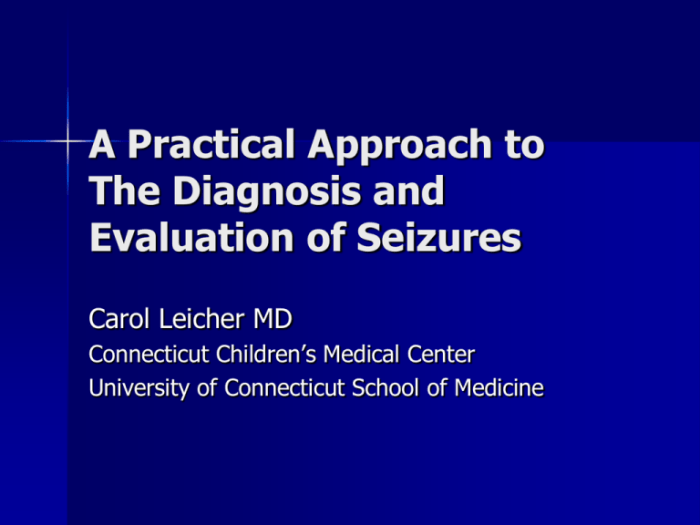Seizure disorder hesi case study – Delving into the intricacies of seizure disorder, this HESI case study offers a unique and compelling narrative that explores the complexities of this neurological condition. Through a meticulous examination of patient demographics, diagnostic evaluations, treatment plans, and nursing management strategies, this case study provides a comprehensive understanding of the challenges and complexities associated with seizure disorders.
As we embark on this journey, we will unravel the key findings and challenges encountered in the patient’s case, critically evaluating the strengths and limitations of the treatment approach. Furthermore, we will explore alternative or additional interventions that could enhance the patient’s overall care and well-being.
Seizure Disorder: Case Study Analysis

Seizure disorders are characterized by recurrent episodes of abnormal electrical activity in the brain, leading to a variety of symptoms including convulsions, loss of consciousness, and sensory disturbances. The management of seizure disorders involves a comprehensive approach that includes accurate diagnosis, appropriate medication, and ongoing monitoring.
Patient Information
The patient is a 25-year-old female with a history of complex partial seizures since adolescence. Her seizures are characterized by sudden episodes of impaired consciousness, staring, and repetitive hand movements. She experiences several seizures per week, each lasting approximately 30 seconds.
Her family history is significant for epilepsy in her father. She has no other significant medical history and is not currently taking any medications.
Diagnostic Evaluation
The patient underwent a comprehensive diagnostic evaluation that included:
- Electroencephalogram (EEG): The EEG showed epileptiform discharges in the left temporal lobe, consistent with complex partial seizures.
- Magnetic resonance imaging (MRI): The MRI revealed a small focal lesion in the left temporal lobe, suggestive of a possible underlying structural abnormality.
- Blood tests: The blood tests were unremarkable, ruling out any metabolic or electrolyte disturbances.
Based on these findings, a diagnosis of complex partial seizures secondary to left temporal lobe epilepsy was established.
Treatment Plan
The patient was started on levetiracetam, an antiepileptic medication that is effective in controlling partial seizures. She was instructed to take 500 mg twice daily.
In addition to medication, the patient was also advised on lifestyle modifications that can help reduce seizure frequency, including:
- Getting adequate sleep
- Avoiding alcohol and recreational drugs
- Managing stress
Nursing Management
Nursing management of the patient with a seizure disorder includes:
- Monitoring seizure frequency and duration
- Educating the patient on seizure precautions and safety measures
- Ensuring patient adherence to the treatment plan
- Providing emotional support and counseling
Case Study Analysis, Seizure disorder hesi case study
The key findings in this case are:
- The patient has complex partial seizures secondary to left temporal lobe epilepsy.
- The patient is being treated with levetiracetam and lifestyle modifications.
- The nursing management of the patient includes monitoring, education, and support.
The strengths of the treatment approach include:
- The medication is effective in controlling the patient’s seizures.
- The lifestyle modifications are helpful in reducing seizure frequency.
- The nursing management is comprehensive and supportive.
Limitations of the treatment approach include:
- The medication may have side effects.
- The lifestyle modifications may be difficult to adhere to.
- The nursing management may be time-consuming.
Alternative or additional interventions that could be considered include:
- Vagus nerve stimulation
- Deep brain stimulation
- Surgery
FAQ Summary: Seizure Disorder Hesi Case Study
What are the common symptoms of seizure disorders?
Seizure disorders can manifest in a variety of ways, including uncontrolled muscle movements, loss of consciousness, and sensory disturbances such as visual or auditory hallucinations.
How are seizure disorders diagnosed?
Diagnosis of seizure disorders typically involves a combination of patient history, physical examination, and diagnostic tests such as electroencephalogram (EEG), magnetic resonance imaging (MRI), and blood tests.
What are the treatment options for seizure disorders?
Treatment options for seizure disorders vary depending on the individual patient and may include medications, surgical interventions, and lifestyle modifications.

